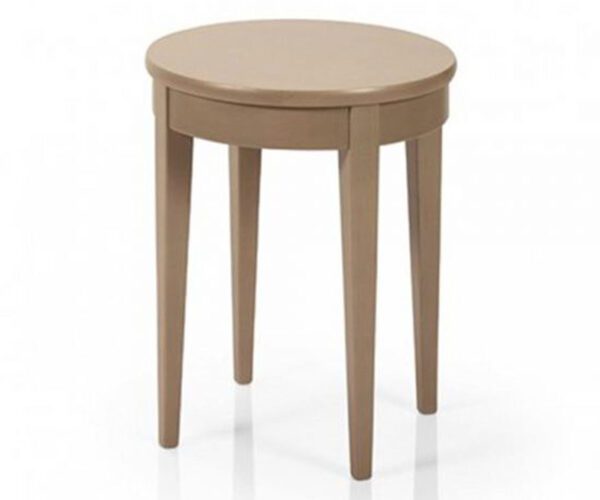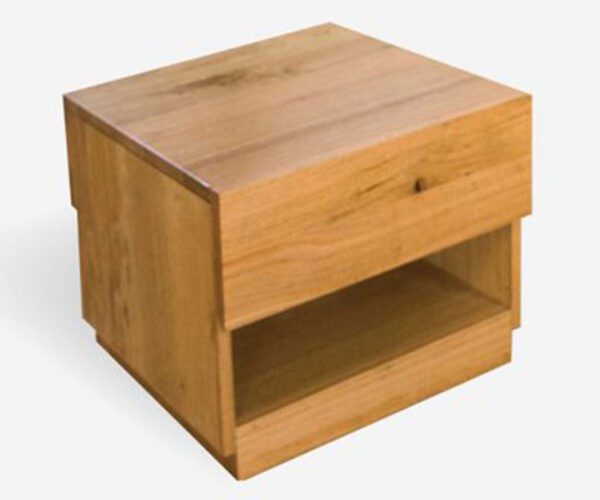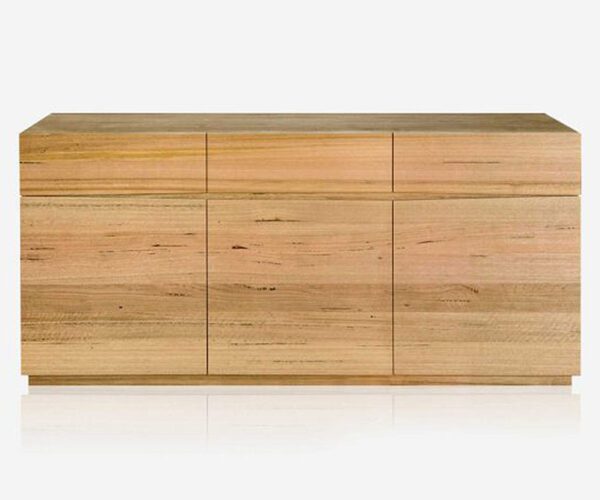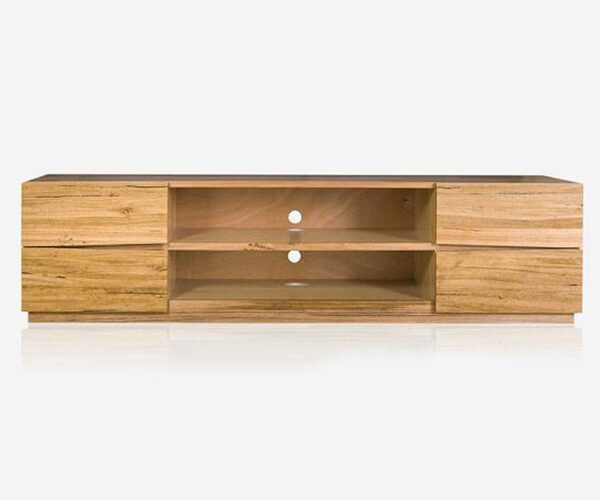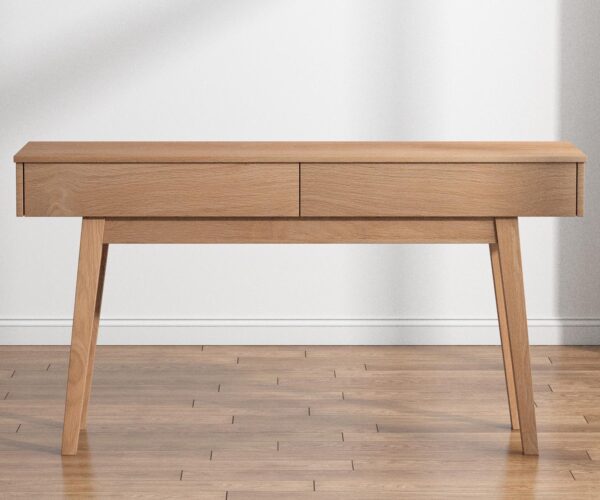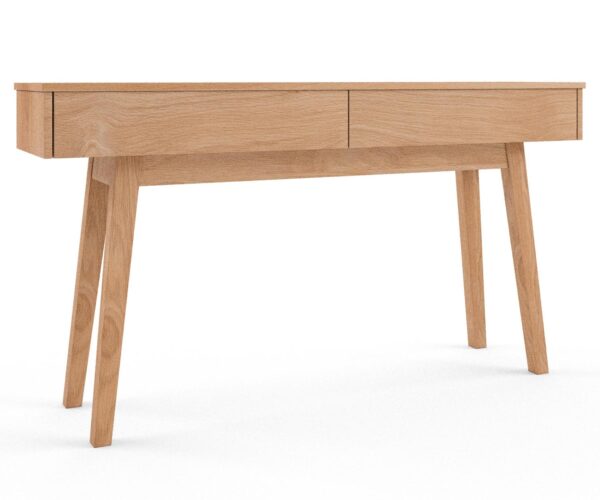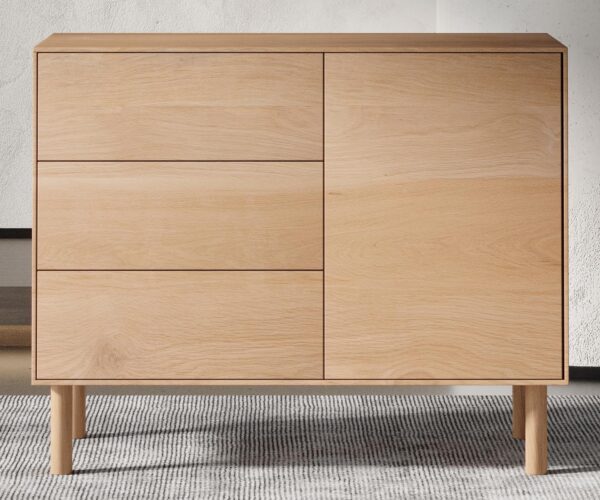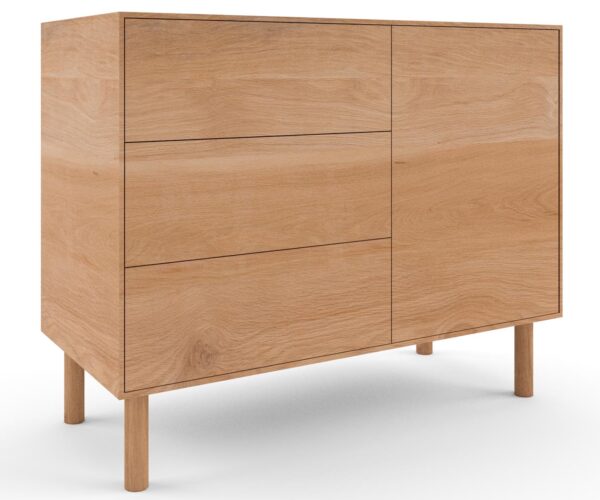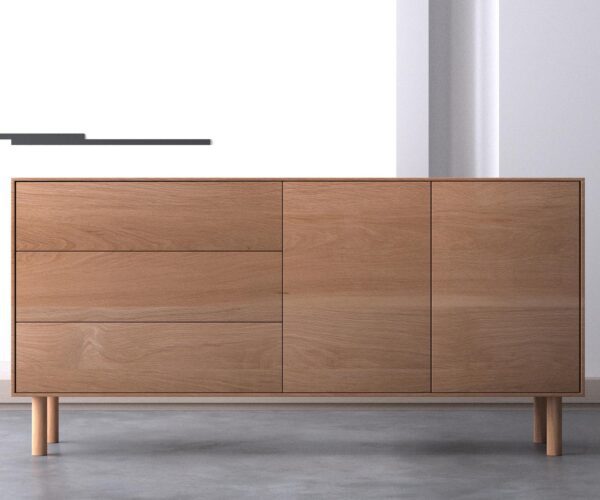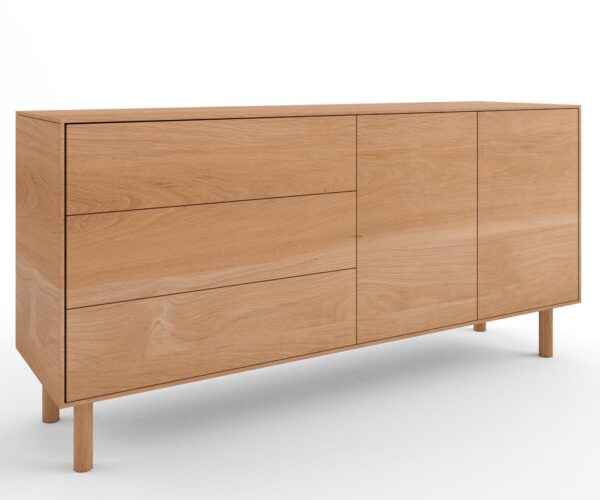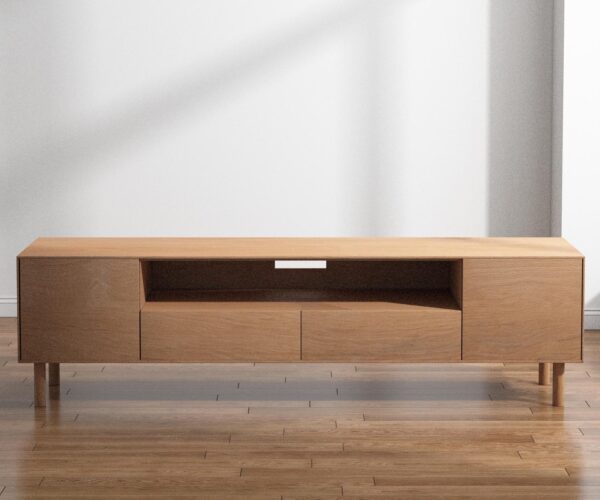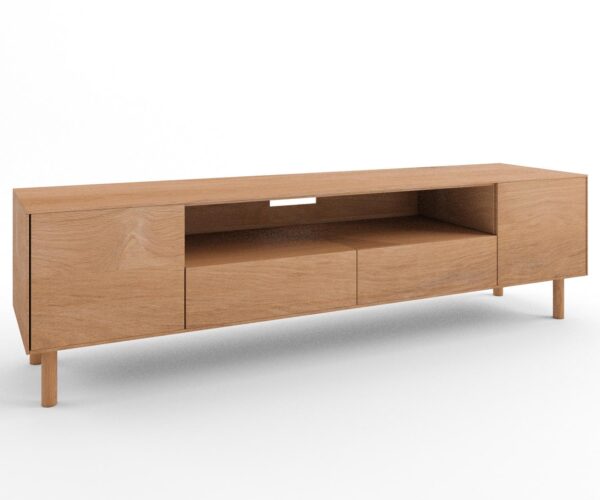Adapting Furniture for Changing Elderly Care Needs: A Continuum of Care Guide

As elderly individuals transition through the various stages within the continuum of care, their needs and requirements change. One critical aspect that greatly influences their comfort, safety, and overall well-being is furniture. Aged care facilities and retirement villages must carefully consider furniture choices at each level of care to ensure they meet the evolving needs of their residents.
In this article, we will explore the significance of furniture considerations throughout the continuum of care, highlighting key factors that facility managers should keep in mind to create supportive and adaptive environments for elderly individuals.
But first…
What is the Continuum of Care in Aged Care and Retirement Living?
The continuum of care in aged care and retirement living refers to a comprehensive range of services and support provided to individuals as their care needs change over time. It recognizes that the requirements of elderly individuals evolve as they progress through different stages of aging and health conditions.
The continuum of care encompasses a spectrum of care options, from independent living to assisted living, memory care, and nursing care. This model emphasizes the importance of providing seamless transitions and holistic care that meets the physical, emotional, and social needs of residents.
By offering a continuum of care, aged care facilities and retirement villages aim to ensure that individuals receive appropriate support and services tailored to their changing circumstances, promoting a better quality of life and well-being.
Benefits of a Continuum of Care Model for Elderly Australians
Implementing a continuum of care model for elderly Australians numerous benefits for both residents and facility management.
Firstly, it allows individuals to age in place and receive the appropriate level of care as their needs evolve, eliminating the need for disruptive and stressful relocations. Continuity of care promotes familiarity, comfort, and a sense of belonging, which can significantly enhance the well-being and overall satisfaction of residents.
Additionally, a continuum of care model facilitates smoother transitions between care levels, ensuring that individuals can access higher levels of care seamlessly when required. This integrated approach promotes better coordination among healthcare professionals, leading to improved communication, care planning, and outcomes for residents.
Moreover, facility management benefits from increased operational efficiency, optimized resource allocation, and enhanced staff retention as the continuum of care model allows for better utilization of existing resources and expertise.
Overall, the continuum of care model offers a comprehensive and person-centered approach that maximizes the quality of care and supports the diverse needs of elderly individuals throughout their aging journey.
Independent Living and Aging in Place
At the initial stage of the continuum of care, many elderly individuals prefer to live independently or age in place within their own homes. However, even in these settings, furniture choices can have a substantial impact on their quality of life.
In this phase, the focus is on providing furniture that promotes comfort, ease of use, and accessibility. Ergonomic chairs, adjustable-height tables, and supportive mattresses are essential to support physical well-being.
Additionally, incorporating features like grab bars and sturdy handrails can help enhance safety and mobility.
Assisted Living and Supportive Furniture
As elderly individuals require more assistance and transition to assisted living settings, furniture considerations take on greater importance.
Supportive furniture becomes crucial to cater to the changing needs and mobility limitations of residents. Items such as lift chairs and beds can aid in transferring individuals in and out of seating or sleeping positions. These furniture pieces provide increased comfort, independence, and reduced physical strain for both residents and caregivers.
Additionally, incorporating features like easy-to-clean materials and infection control measures ensures a safe and hygienic environment for residents.
Memory Care and Creating Familiarity
For individuals with dementia or memory-related conditions, memory care units within the continuum of care models demand specialized furniture considerations.
Creating familiarity and minimizing confusion become paramount. Furniture choices should focus on reducing hazards and providing a secure environment. Clear signage, memory aids, and color contrasts help individuals navigate their surroundings with greater ease.
Additionally, comfortable seating options, like recliners or gliders, can provide a sense of calm and relaxation. Strategically arranging furniture in a familiar and predictable layout can assist residents in finding their way and reduce anxiety.
Nursing Care and Healthcare Furniture
In the later stages of the continuum of care, when individuals require more intensive medical support, healthcare furniture plays a crucial role. Specialized beds, pressure-relieving mattresses, and advanced seating systems become essential in ensuring the comfort and well-being of residents with complex healthcare needs. These furniture options are designed to prevent pressure sores, promote proper alignment, and facilitate ease of care. Integration of assistive technologies, such as bed alarms or call systems, further enhances safety and provides prompt assistance when required.
Additionally, adjustable and adaptable furniture solutions are beneficial for accommodating medical equipment and facilitating care activities.
Furniture considerations play a significant role in meeting the changing needs of elderly individuals throughout the continuum of care. Aged care facilities and retirement villages must carefully assess the requirements at each stage and select furniture that aligns with the evolving needs of residents.
By providing supportive, adaptive, and comfortable furniture solutions, facilities can enhance the well-being, safety, and overall quality of life for elderly individuals.
By creating environments that address the specific challenges of each level of care, we can ensure that elderly individuals receive the care and support they deserve as they journey through the continuum of care.
FAQs About Furniture Selection in Aged Care
Why is furniture selection crucial in aged care environments?
Furniture selection is crucial in aged care environments as it directly impacts the comfort, safety, and overall well-being of residents, contributing to a positive living experience.
What factors should be considered when choosing furniture for aged care facilities?
Considerations include comfort, safety features, durability, ease of maintenance, adherence to ergonomic design principles, and customization options to meet the diverse needs of residents.
How can furniture choices contribute to creating a homelike atmosphere in aged care settings?
Thoughtfully selected furniture with warm designs, comfortable aesthetics, and personalized touches can contribute to creating a homelike atmosphere, enhancing the sense of comfort and familiarity for residents.
Are there specific guidelines for selecting dementia-friendly furniture in aged care facilities?
Yes, dementia-friendly furniture focuses on minimizing confusion, using familiar designs, and incorporating calming elements to create a supportive environment for residents with cognitive impairments.
How does furniture design impact the safety of aged care residents?
Furniture designed with safety features such as non-slip materials, sturdy construction, and rounded edges plays a crucial role in minimizing the risk of accidents and ensuring the safety of residents.
Can furniture be customized to meet the individual preferences of aged care residents?
Many furniture manufacturers offer customization options, allowing facilities to choose styles, colors, and features that align with the personal preferences of residents, promoting a sense of individuality.
What role does furniture arrangement play in creating a conducive social environment for residents?
Thoughtful furniture arrangement in communal spaces can encourage social interaction by creating inviting seating areas, facilitating group activities, and fostering a sense of community among residents.
How can technology be integrated into furniture design to benefit aged care residents?
Integration of technology may include features like built-in charging ports, adjustable settings for personalized comfort, and smart furniture solutions that enhance the overall living experience for residents.
What considerations should be made for the maintenance and durability of furniture in aged care settings?
Choosing durable materials, easy-to-clean fabrics, and regular maintenance practices are essential considerations to ensure the longevity and functionality of furniture in aged care facilities.
How can furniture choices contribute to sustainability in aged care environments?
Opting for sustainable materials, such as recycled or responsibly sourced wood, and choosing furniture that is designed for disassembly and recycling at the end of its lifespan are ways to contribute to environmental sustainability in aged care settings.
Some of our favourite chairs designed specifically for residents of aged care and retirement living
More News
Adapting Furniture for Changing Elderly Care Needs: A Continuum of Care Guide

As elderly individuals transition through the various stages within the continuum of care, their needs and requirements change. One critical aspect that greatly influences their comfort, safety, and overall well-being is furniture. Aged care facilities and retirement villages must carefully consider furniture choices at each level of care to ensure they meet the evolving needs of their residents.
In this article, we will explore the significance of furniture considerations throughout the continuum of care, highlighting key factors that facility managers should keep in mind to create supportive and adaptive environments for elderly individuals.
But first…
What is the Continuum of Care in Aged Care and Retirement Living?
The continuum of care in aged care and retirement living refers to a comprehensive range of services and support provided to individuals as their care needs change over time. It recognizes that the requirements of elderly individuals evolve as they progress through different stages of aging and health conditions.
The continuum of care encompasses a spectrum of care options, from independent living to assisted living, memory care, and nursing care. This model emphasizes the importance of providing seamless transitions and holistic care that meets the physical, emotional, and social needs of residents.
By offering a continuum of care, aged care facilities and retirement villages aim to ensure that individuals receive appropriate support and services tailored to their changing circumstances, promoting a better quality of life and well-being.
Benefits of a Continuum of Care Model for Elderly Australians
Implementing a continuum of care model for elderly Australians numerous benefits for both residents and facility management.
Firstly, it allows individuals to age in place and receive the appropriate level of care as their needs evolve, eliminating the need for disruptive and stressful relocations. Continuity of care promotes familiarity, comfort, and a sense of belonging, which can significantly enhance the well-being and overall satisfaction of residents.
Additionally, a continuum of care model facilitates smoother transitions between care levels, ensuring that individuals can access higher levels of care seamlessly when required. This integrated approach promotes better coordination among healthcare professionals, leading to improved communication, care planning, and outcomes for residents.
Moreover, facility management benefits from increased operational efficiency, optimized resource allocation, and enhanced staff retention as the continuum of care model allows for better utilization of existing resources and expertise.
Overall, the continuum of care model offers a comprehensive and person-centered approach that maximizes the quality of care and supports the diverse needs of elderly individuals throughout their aging journey.
Independent Living and Aging in Place
At the initial stage of the continuum of care, many elderly individuals prefer to live independently or age in place within their own homes. However, even in these settings, furniture choices can have a substantial impact on their quality of life.
In this phase, the focus is on providing furniture that promotes comfort, ease of use, and accessibility. Ergonomic chairs, adjustable-height tables, and supportive mattresses are essential to support physical well-being.
Additionally, incorporating features like grab bars and sturdy handrails can help enhance safety and mobility.
Assisted Living and Supportive Furniture
As elderly individuals require more assistance and transition to assisted living settings, furniture considerations take on greater importance.
Supportive furniture becomes crucial to cater to the changing needs and mobility limitations of residents. Items such as lift chairs and beds can aid in transferring individuals in and out of seating or sleeping positions. These furniture pieces provide increased comfort, independence, and reduced physical strain for both residents and caregivers.
Additionally, incorporating features like easy-to-clean materials and infection control measures ensures a safe and hygienic environment for residents.
Memory Care and Creating Familiarity
For individuals with dementia or memory-related conditions, memory care units within the continuum of care models demand specialized furniture considerations.
Creating familiarity and minimizing confusion become paramount. Furniture choices should focus on reducing hazards and providing a secure environment. Clear signage, memory aids, and color contrasts help individuals navigate their surroundings with greater ease.
Additionally, comfortable seating options, like recliners or gliders, can provide a sense of calm and relaxation. Strategically arranging furniture in a familiar and predictable layout can assist residents in finding their way and reduce anxiety.
Nursing Care and Healthcare Furniture
In the later stages of the continuum of care, when individuals require more intensive medical support, healthcare furniture plays a crucial role. Specialized beds, pressure-relieving mattresses, and advanced seating systems become essential in ensuring the comfort and well-being of residents with complex healthcare needs. These furniture options are designed to prevent pressure sores, promote proper alignment, and facilitate ease of care. Integration of assistive technologies, such as bed alarms or call systems, further enhances safety and provides prompt assistance when required.
Additionally, adjustable and adaptable furniture solutions are beneficial for accommodating medical equipment and facilitating care activities.
Furniture considerations play a significant role in meeting the changing needs of elderly individuals throughout the continuum of care. Aged care facilities and retirement villages must carefully assess the requirements at each stage and select furniture that aligns with the evolving needs of residents.
By providing supportive, adaptive, and comfortable furniture solutions, facilities can enhance the well-being, safety, and overall quality of life for elderly individuals.
By creating environments that address the specific challenges of each level of care, we can ensure that elderly individuals receive the care and support they deserve as they journey through the continuum of care.
FAQs About Furniture Selection in Aged Care
Why is furniture selection crucial in aged care environments?
Furniture selection is crucial in aged care environments as it directly impacts the comfort, safety, and overall well-being of residents, contributing to a positive living experience.
What factors should be considered when choosing furniture for aged care facilities?
Considerations include comfort, safety features, durability, ease of maintenance, adherence to ergonomic design principles, and customization options to meet the diverse needs of residents.
How can furniture choices contribute to creating a homelike atmosphere in aged care settings?
Thoughtfully selected furniture with warm designs, comfortable aesthetics, and personalized touches can contribute to creating a homelike atmosphere, enhancing the sense of comfort and familiarity for residents.
Are there specific guidelines for selecting dementia-friendly furniture in aged care facilities?
Yes, dementia-friendly furniture focuses on minimizing confusion, using familiar designs, and incorporating calming elements to create a supportive environment for residents with cognitive impairments.
How does furniture design impact the safety of aged care residents?
Furniture designed with safety features such as non-slip materials, sturdy construction, and rounded edges plays a crucial role in minimizing the risk of accidents and ensuring the safety of residents.
Can furniture be customized to meet the individual preferences of aged care residents?
Many furniture manufacturers offer customization options, allowing facilities to choose styles, colors, and features that align with the personal preferences of residents, promoting a sense of individuality.
What role does furniture arrangement play in creating a conducive social environment for residents?
Thoughtful furniture arrangement in communal spaces can encourage social interaction by creating inviting seating areas, facilitating group activities, and fostering a sense of community among residents.
How can technology be integrated into furniture design to benefit aged care residents?
Integration of technology may include features like built-in charging ports, adjustable settings for personalized comfort, and smart furniture solutions that enhance the overall living experience for residents.
What considerations should be made for the maintenance and durability of furniture in aged care settings?
Choosing durable materials, easy-to-clean fabrics, and regular maintenance practices are essential considerations to ensure the longevity and functionality of furniture in aged care facilities.
How can furniture choices contribute to sustainability in aged care environments?
Opting for sustainable materials, such as recycled or responsibly sourced wood, and choosing furniture that is designed for disassembly and recycling at the end of its lifespan are ways to contribute to environmental sustainability in aged care settings.
Some of our favourite chairs designed specifically for residents of aged care and retirement living
Commercial furniture by room
Based in Brisbane, we’re an Australian manufacturer of aged care furniture, retirement living furniture, hospital & healthcare furniture, hotel & accommodation furniture and student accommodation furniture. We also supply a range of commercial office furniture.
Discover the FHG Look Book: Your Source of Inspiration for Quality Australian-Made Commercial Furniture
- Quality Craftsmanship: See why we’ve been a trusted partner for over 25 years.
- Local Excellence: Learn how our Brisbane team ensures the highest standards.
- Inspiration and Ideas: Find innovative furniture solutions for any environment.
Don’t miss the opportunity to transform your commercial space with FHG’s expertly crafted furniture. Download the FHG Look Book today and start your journey towards exceptional design and quality.

